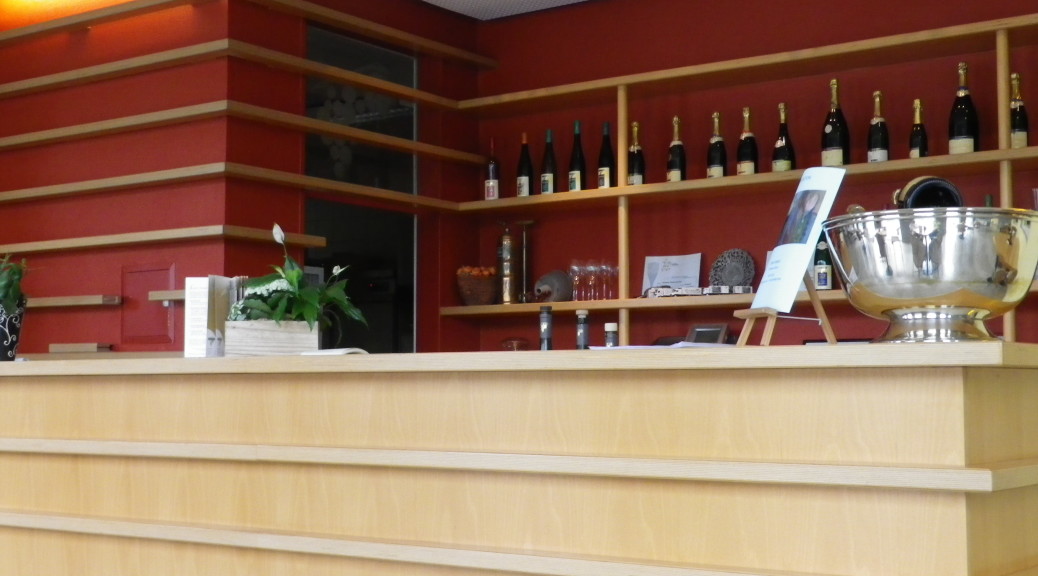What I Learned:
Little known, as not much is exported, Luxembourg’s wines are readily available and thoroughly enjoyed by residents and visitors in the Grand Duchy. For lovers of dry, white wines, this region provides some delicious, drier alternatives to Alsatian or Rhine white wines.
From the towns of Schengen to Wasserbillig, Luxembourg joins the centuries old tradition of producing wines along the Moselle. On this west side of the river, local vintners grow their grapes mostly in terraces rising steeply from the narrow river plain for much of Luxembourg’s 42 kilometer stretch along the Moselle.
The Grevenmacher Canton and the Remich Canton, with their two different soils are the two main centers for the Moselle Luxembourgeoise Appellation D’Origine Protegee, the one and only wine region in Luxembourg. All wines produced from grapes in this region fall in this category, with additional quality designations of “Premier Cru”, then “Grand Premier Cru”, and Charta-designated wines at the top.
Also within this area, the Appellation Controlee Cremant de Luxembourg began its rise to fame in 1991, as the region began to produce sparkling wines applying the same techniques as in the region of Champagne. Here, as in Alsace, the sparkling wines are known as cremants. This sector of Luxembourg’s wine trade has quickly gained ground.
While Pinot Noir is grown, increasingly in larger amounts, the main varietals are white. Auxerrois is one of the most widely-planted white varietals, and it plays an important role in Luxembourg’s cremant production. Elbling is another notable white varietal, although far less cultivated, which is very closely associated historically with wine production in this area. Rivaner (Mueller-Thurgau), very widely planted, Riesling, Gewuerztraminer, Pinot Blanc and Pinot Gris also grow here.
In addition to some unique and very tasty still and sparkling wines, this region also produces straw wines, ice wines and late harvest wines.
What I Tasted:
Gales, Cremant, Heritage Brut: Taste of green apples, slight floral notes, tart.
Bernard Massard, Cremant, 2012, Selection Brut: Slightly heavy in the mouth, some floral notes. This cremant added a well-known local varietal, Elbling, to the cuvee, resulting in a unique sparkling wine.
Poll Fabaire, Cremant, 2009, Cuvee Millesimee Brut: Taste of green apple, hint of nutmeg, tart; pleasantly light in the mouth.
2012 Pinot Blanc, Grand Premier Cru, Coteaux de Schengen, Domaines Vinsmoselle: a crisp wine, yellower in color and richer in mouthfeel than expected, with fruity overtones and a hint of citrus and a tiny bit of spice.
2012 Auxerrois, Grand Premier Cru, Remich Hopertsbour, Domaines Vinsmoselle: delicate, floral, slightly fruity, with a hint of smoke. Medium mouthfeel.
2012 Auxerrois, Stadtbredimus Coteaux, Grand Premier Cru, Domaine Viticole Cep D’Or : white fruits, with slight floral notes, minerality comes through, long finish.
2012 Riesling, Grand Premier Cru Signature, Stadtbredimus Dieffert, Domaine Viticole Cep D’Or: Fruity, with a green apple tartness and acidity to match.
2011 Auxerrois, Grand Premier Cru, Remich Hopertsbour, Domaines Vinsmoselle, Moselle Luxembourgeoise Appellation Protegee: slight citrus and grassy notes, crisp, somewhat tart; dry, light and refreshing.
2011 Pinot Noir, Barrique “Signature”, Stadtbredimus Fels, Cep D’Or: Smoky, well-balanced tannins, red berry fruits, very dry.
